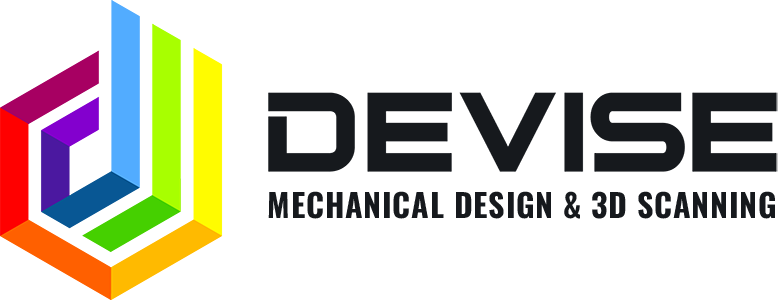3D Scanners
What are 3D Scanners?
3D scanning systems are used within various industries including automotive, aerospace, marine, medical and manufacturing. 3D scanning is the process of capturing digital information about the shape of an object with equipment that uses a laser or light to measure the distance between the scanner and the object. 3D scanning can be used for reverse engineering and computer-aided inspections. 3D laser scanners capture tens of thousands of points per second and allow us to inspect parts quickly.


What can 3D Scanning do?
3D scanning opens up a world of possibilities. Imagine being able to capture anything in the physical world and have a digital model of it in minutes. Every day, companies use 3D scanners and software to:
- Create and reverse engineer CAD models of real parts to capture lost designs, update existing products, and make new ones.
- Verify product quality by comparing manufactured parts to CAD designs.
- Make customised products for countless industries.
- Preserve organic structures.
- And much more.
What are the benefits of 3D Scanning?

Very simple 3D scanning process
The straightforward data acquisition process generates extra fast results, with real-time visualization and direct mesh output. These 3D scanners are up and running in less than five minutes and require no rigid setup or prior experience from the user. You can scan parts in virtually any size, material, or color.

3D scanning where you need to go
Our 3D scanners are handheld, light, and they fit into a small suitcase. Because they have no mechanical constraint, they allow total freedom of movement and can be brought and used virtually anywhere.

Accurate measurements in real-life conditions
Creaform 3D Scanners ensure highly-accurate measurements, regardless of the environment (instability, vibrations, thermal variation, etc.) or operator skills. Our scanners use software algorithms that simplify the measurement process and greatly increase data accuracy.
3D model scanning can benefit the design process by:
– Increasing effectiveness working with complex parts and shapes.
– Helping with design of products to accommodate someone else’s part.
– If CAD models are outdated, a 3D scan will provide an updated version
– Replacement of missing or older parts
3D scanning advantages
– Quickly capture all of the physical measurements of any physical object– Save time in design work
– Ensure parts will fit together on the first try
– Capture engineering optimisations inherent in manufactured parts
– Utilise modern manufacturing on parts that were originally manufactured before CAD
– Compare “as-designed” model to “as-built” condition of manufactured parts
Areas 3D scanning can be used:
– Obsolete / Prototype parts / Reverse Engineering– Inspection / Quality Control
– Movies / TV / Games
– Art / Reproductions
– Historical Artifacts
– Obsolete / Prototype parts / Reverse Engineering
– Aerospace / Marine
– Medical / Dental




